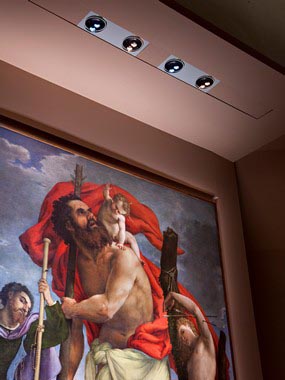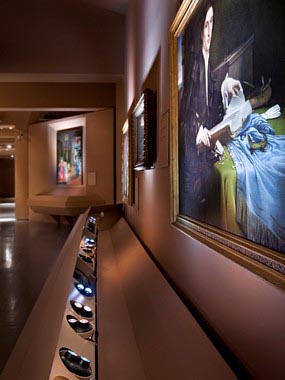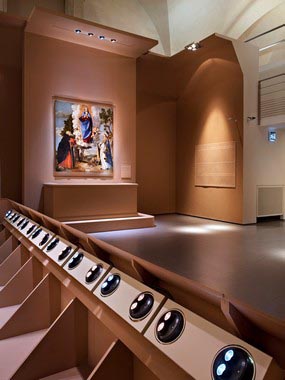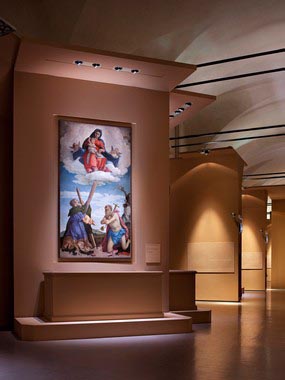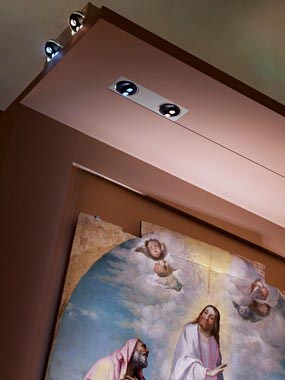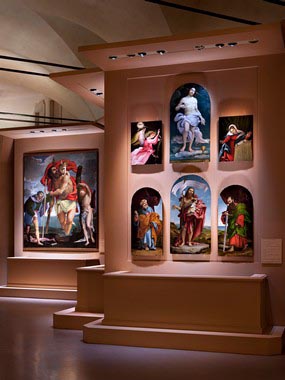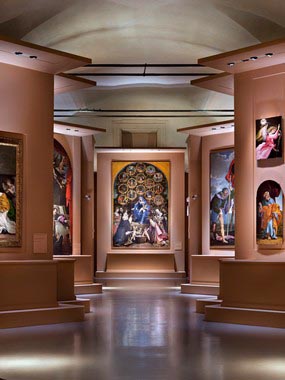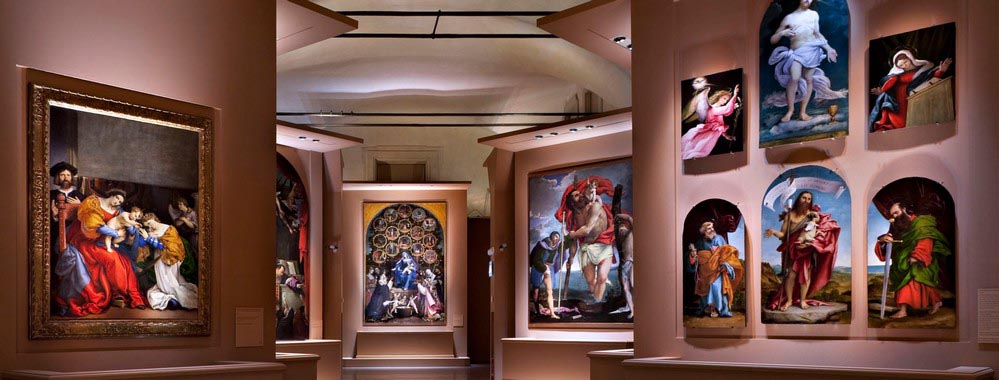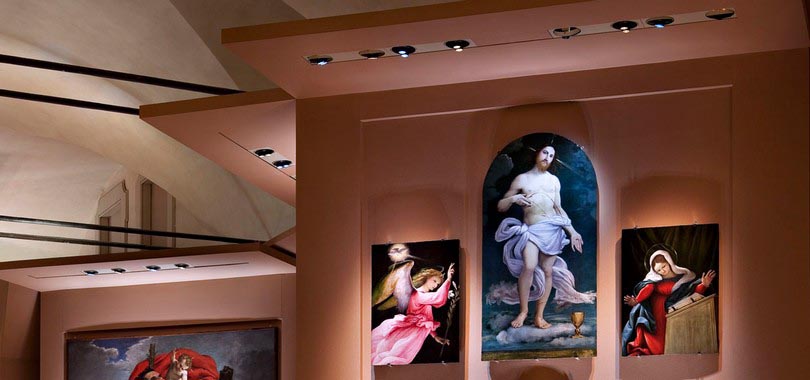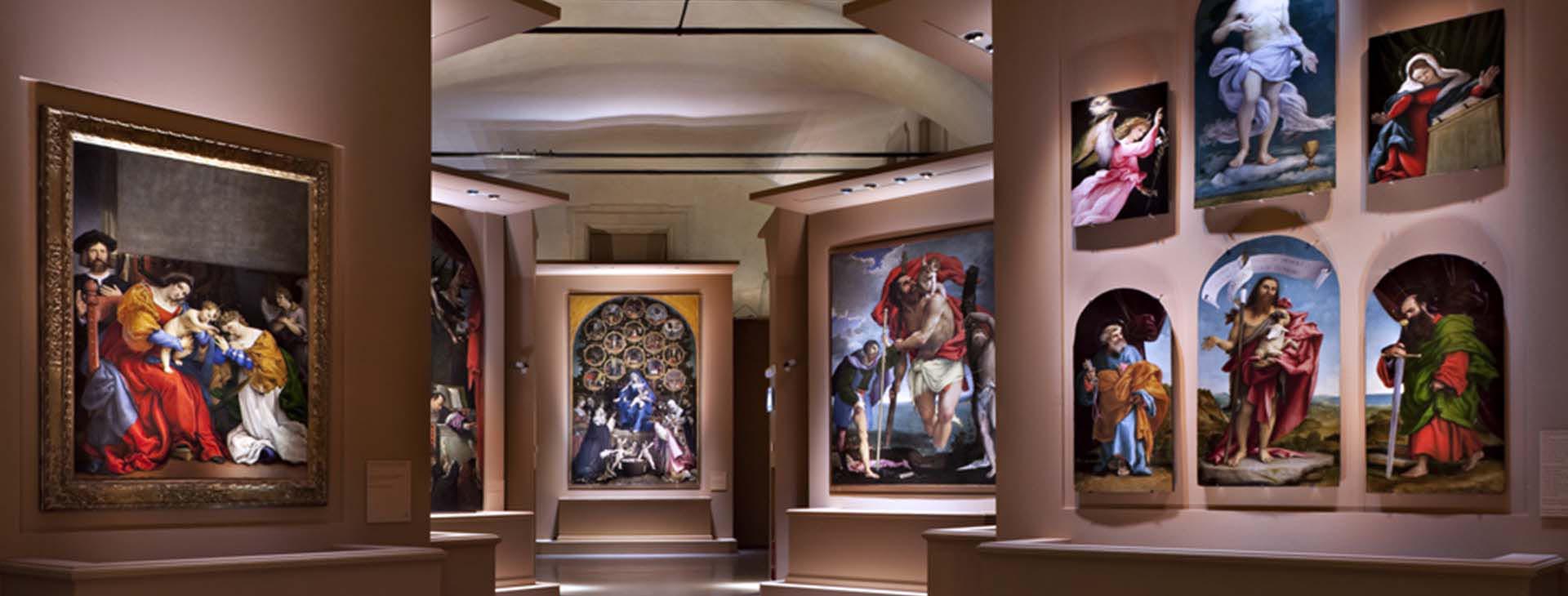
City: Rome
Country: Italy
Architectural Design: E. Alberti, M. Zocchetta
Lighting Design: Consuline Architetti Associati
Photo: Germano BorrelliA high value art event, where technology plays an absolutely strategic role. The event is the exhibition dedicated to the Master of Sixteenth Century Lorenzo Lotto, which took place in Rome at the Scuderie del Quirinale in the Springtime 2011. The technology – an evolution of the great result achieved with OPTAGON in the lighting of the Cappella di Eleonora in Florence – is what Consuline and Targetti have developed to make artworks are perceived at the height of their true colors and with a never before experimented sense of tridimensionality. All this thanks to light.
The principle from which everything originated is based on the so called mirror neurons, whose discovery, in the Nineties of last Century, has definitely proved, for instance, that we see with our eyes, but we look with our brains, allowing to develop innovative theories on our way of perceiving shapes and colors and even putting in doubt some certainties on human behavior.
The research activities of the Milan studio Consuline are based on this principle and the possibilities offered by LED technology. The meeting with Targetti has been essential, as the Florentine company translated the theory into practice, producing a white light from LED sources characterized by a spectrum with some precise empty spaces. Thanks to this “absence” of wave length, our brain is induced to seize just those shades that help and optimize the perception of the sense of tridimensionality of the paintings, as well as a better comprehension of details.
From a technical point of view, the role of Targetti consisted in designing, producing and supplying 168 lighting fixtures developed for Rome exhibition. Special LED projectors designed to bring out the pictorial technique and aesthetic sensibility of Lotto illuminated the 57 artworks on display at the Scuderie del Quirinale, with a kind of light able to stimulate the perception and tridimensionality of the artworks themselves at neuronal level.
Country: Italy
Architectural Design: E. Alberti, M. Zocchetta
Lighting Design: Consuline Architetti Associati
Photo: Germano BorrelliA high value art event, where technology plays an absolutely strategic role. The event is the exhibition dedicated to the Master of Sixteenth Century Lorenzo Lotto, which took place in Rome at the Scuderie del Quirinale in the Springtime 2011. The technology – an evolution of the great result achieved with OPTAGON in the lighting of the Cappella di Eleonora in Florence – is what Consuline and Targetti have developed to make artworks are perceived at the height of their true colors and with a never before experimented sense of tridimensionality. All this thanks to light.
The principle from which everything originated is based on the so called mirror neurons, whose discovery, in the Nineties of last Century, has definitely proved, for instance, that we see with our eyes, but we look with our brains, allowing to develop innovative theories on our way of perceiving shapes and colors and even putting in doubt some certainties on human behavior.
The research activities of the Milan studio Consuline are based on this principle and the possibilities offered by LED technology. The meeting with Targetti has been essential, as the Florentine company translated the theory into practice, producing a white light from LED sources characterized by a spectrum with some precise empty spaces. Thanks to this “absence” of wave length, our brain is induced to seize just those shades that help and optimize the perception of the sense of tridimensionality of the paintings, as well as a better comprehension of details.
From a technical point of view, the role of Targetti consisted in designing, producing and supplying 168 lighting fixtures developed for Rome exhibition. Special LED projectors designed to bring out the pictorial technique and aesthetic sensibility of Lotto illuminated the 57 artworks on display at the Scuderie del Quirinale, with a kind of light able to stimulate the perception and tridimensionality of the artworks themselves at neuronal level.
Other projects in the same category


